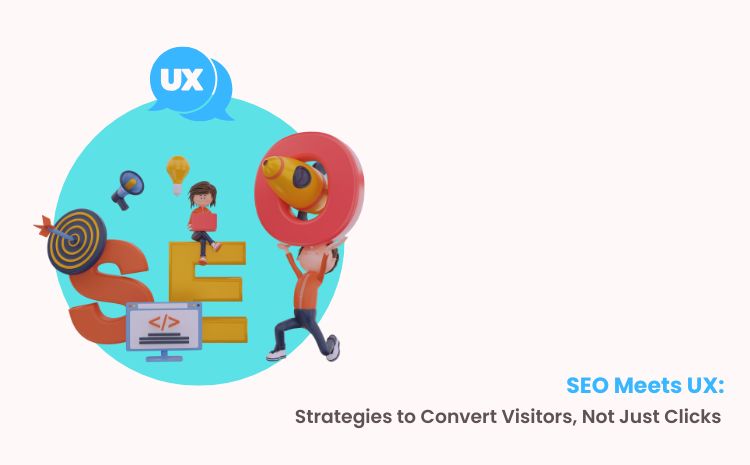When building a website, many brands focus on getting clicks from search engines. But clicks alone don’t drive growth. User satisfaction, engagement, and conversions matter just as much. That’s why combining UX & SEO Together is crucial. When these two disciplines work in harmony, visitors not only find your content—they stay, explore, and take action. In this article, we’ll explore practical strategies to design websites that are search-friendly, user-friendly, and conversion-focused. By aligning navigation, page layouts, internal linking, and performance, your website can become a tool for both traffic and meaningful engagement.
Map Out Your Information Architecture
Creating a strong site structure is the first step in merging user experience with search optimisation.
- Keyword research: Start by identifying what your audience is searching for. Keywords are signals about their intent.
- Organise pages logically: Group related content into topic hubs. This helps both visitors and search engines navigate easily.
- Simple navigation: Ensure users can reach any important page in three clicks or less.
- URLs and internal links: Use descriptive URLs and link related pages to guide users through your content naturally.
- Accessibility: Make the website accessible for all users, including those using assistive technologies.
Most mistakes happen when designers ignore SEO, or SEOs ignore design. For example, cluttered URLs or hidden pages can confuse visitors and search engines alike. Digitex Technologies, a top Essex SEO agency, often emphasises that visual planning tools can help map your site structure efficiently. This approach creates a roadmap for both search engines and human visitors, ensuring content reaches the right audience while keeping them engaged.
Build Intuitive Navigation Elements
Navigation is how your information architecture comes to life for visitors. A well-thought-out menu can keep users exploring your site longer.
- Main menu: Limit items to 5-7 choices to reduce decision fatigue.
- Footer menu: Include medium-tier SEO pages, legal links, and brand info.
- Breadcrumbs: Reinforce hierarchy and make deep pages easy to navigate.
- Filters and search: Especially for e-commerce, provide options to find products quickly.
- Consistency: Avoid overly clever labels; clarity matters more than creativity.
For instance, Essex SEO agency often notes that websites with clear navigation enjoy lower bounce rates and better crawlability. Drop-downs can expand options without overwhelming users, and consistent link placement builds trust and engagement. Every extra click should feel intuitive, guiding users smoothly toward conversion points.
Design UX and SEO-Friendly Page Layouts
Page layouts shape how content is consumed and how search engines interpret your site. Balancing visual appeal with readability is crucial.
- Hero section: Include clear headlines and value propositions above the fold.
- Calls-to-action (CTAs): Position buttons or forms where users naturally focus.
- Content blocks: Break text into digestible sections with headings.
- Visuals: Use images to complement content, not overwhelm it.
- Internal linking: Guide visitors to related pages or resources naturally.
Designers often create minimal pages that lack context for search engines. Conversely, SEO-heavy pages can appear as walls of text. By applying simple UX principles, like cognitive load reduction and least-effort paths, you create pages that rank well and keep users engaged. Wireframing before final design can help align intent with structure, ensuring content both attracts and converts visitors.
Use Internal Linking Strategically
Internal links connect your pages, guiding visitors through your site while signaling important content to search engines.
- Relevance: Links should provide value and context to readers.
- Anchor text: Use descriptive phrases, not generic “click here” links.
- Link depth: Avoid linking to pages buried too deep.
- Distribution: Ensure authority flows naturally across important pages.
Proper linking reduces bounce rates and keeps users exploring, which indirectly boosts search rankings. Tools like Ahrefs’ Site Audit can help identify opportunities for internal linking improvements. Linking thoughtfully between relevant content improves both UX and SEO performance.
Optimise Performance for Users and Search Engines
A fast, reliable website satisfies visitors and is rewarded by search engines.
- Load speed: Minimise scripts, optimise images, and leverage caching.
- Core Web Vitals: Focus on metrics like loading, interactivity, and visual stability.
- Crawlability: Fix broken links, redirects, and errors that frustrate users and bots.
- Behavior analytics: Track clicks, scrolls, and quick backs to spot friction points.
Even excellent designs fail if the site performs poorly. By monitoring technical health alongside user behavior, your website can provide smooth, engaging experiences that keep visitors converting.
Avoid Common UX and SEO Pitfalls
Problems arise when either discipline dominates the process.
- SEO mistakes: Wrong keywords, overstuffing, minimal content, or misaligned intent.
- Design mistakes: Cluttered layouts, walls of text, broken flow, or aggressive selling.
The solution is balance. Combining SEO principles with UX design in professional web development creates a website that’s discoverable, engaging, and built to convert.
Driving Results with UX & SEO Together
When brands bring UX & SEO Together, they move beyond clicks to meaningful engagement. Clear navigation, intuitive layouts, strategic linking, and optimised performance encourage visitors to explore and take action. By planning site structure, page design, and technical performance together, your website can rank higher, build trust, and convert better. Digitex Technologies shows that integrating these strategies transforms websites into powerful tools for growth. This collaboration ensures users enjoy smooth experiences while search engines recognise the value of your content.

